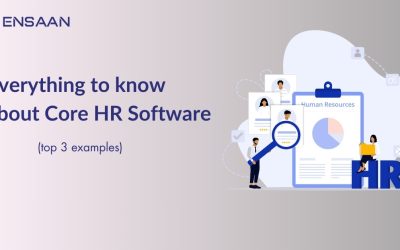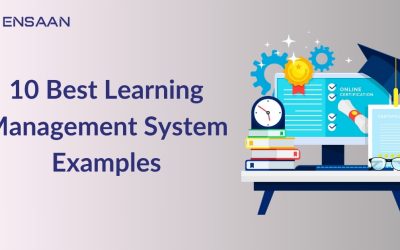So, you know what HRIS and HRMS are, and you are a little familiar with HCM; but do you know the real difference between these kinds of HR systems? well let’s figure the actual differences between HRIS vs HRMS vs HCM Systems.
Probably one of the biggest tools HR Software uses is an HRIS, or Human Resources Information System.
This article aims to give you an overview of what an HRIS is and how it can deal with your company’s human resources in a much more effective way than a Human Resources Management System and Human Capital Management software combined.
In this Blog, we will Explain the main Points You should know about HCM Software, HRMS, and HRIS Systems.
Table of contents
- What is an HRIS?
- How does an HRIS work?
- What are the main benefits of an HRIS?
- What is an HRMS?
- How does an HRMS work?
- What are the key features of HRMS?
- What is HCM?
- How does an HCM work?
- Benefits of an HRMS
- What’s the actual Difference between HRIS VS HRMS VS HCM?
- HRIS vs HRMS:
- HRMS vs HCM:
- Which HR software should I choose for my business?
- How Ensaantech Can Help?
What is an HRIS?
An HRIS is a basic core human resource function aid tool in human resources software that stores employee data. The systems are designed to provide easy access to streamlined information.
The HRIS eliminates the need for multiple spreadsheets, databases, and paperwork overload by storing all information about an employee in one place.
Though each system varies, an HRIS organizes the following functions for human resource teams:
- Core HR and Payroll
- Benefits administration
- Training records
- HR analytics and reporting
How does an HRIS work?
Almost all HRIS solutions have a core, central database for employee information storage and management. In most cases, this facilitates the entry of personnel data into one system and makes it accessible from anywhere.
What are the main benefits of an HRIS?
With all the information and analytics in one place, it helps companies find data more efficiently and analyze them correctly to come up with better-informed decisions regarding hiring, firing, salary raise, and promotion, among other human resource-related decisions.
It often comes as a realization that an HRIS brings about more efficiency and productivity to employees and managers.
What is an HRMS?
An HRMS is a human resource management system, much like an HR management system, but with some added features that allow an organization to manage employee data and likewise other significant human resource activities, including recruitment, payroll, benefits, training, and performance appraisal.
They share some similarities with HRIS systems because they do much the same things in the central areas of HR. However, there are some important differences.
HRMS systems offer the increased ability to automate functions which are more comprehensive, all the way from selection to hiring, onboarding, development, and even separation-while HRIS systems focus on eliminating hassles perceived by HR teams in terms of data entry and data management.
Since HRMS has much advanced functionality, they usually turn out to be the most expensive in general amongst types of HR management software.
How does an HRMS work?
Organizations automate their work and organize their data on employees through an HRMS system and come up with data-driven reports.
The presence of the system facilitates work without paper documents to be effective and efficient.
What are the key features of HRMS?
While some HRMS systems are designed for the largest enterprises with hundreds of thousands of workers or employees, others have modest capacity and can therefore be tuned or tailored for small businesses. The following would be general and “best practices”:
- General HR Functions: Manage employee benefits, including health insurance and retirement plans.
- Time and Attendance: Track attendance, manage absences, and ensure compliance with labor laws.
- Analytics: Provide real-time reports, predict workforce trends, and analyze financial impacts.
- Onboarding: Streamline new hires with paperless forms, manage probation periods, and ensure hiring compliance.
- Learning and Development: Administer training programs and ensure compliance with regulations.
- Payroll: Process payroll efficiently, manage overtime, and provide digital access to pay information.
What is HCM?
HCM software is a digital solution to human resources that helps organizations in automating and managing all activities related to employees in one central system. Some Areas Best HCM Software Covers include:
- Talent acquisition
- ATS (applicant tracking system)
- Onboarding
- Talent management
- Culture-building
- Career pathing
- Competency mapping
- Succession planning
How does an HCM work?
HCM software is a suite of integrated HR tools that leverage mobile and cloud technology for data processing.
That data is pulled from various data centers, running reports and creating a seamless user experience for HR professionals.
Benefits of an HRMS
The use of an HRMS can bring many benefits to HR teams.
With their interlinking modules, they can automate much of the administrative work, freeing up your staff’s time from the tedious daily tasks.
Other advantages of using HRMS software include:
- Good practice in managing data
- Automated flags for compliance monitoring
- Better employee self-service
- Better decision-making from the integration and analysis of the data
What’s the actual Difference between HRIS VS HRMS VS HCM?
While it might be quite confusing to differentiate between HRIS vs HRMS vs HCM Systems, with the help of the terms above, which make them almost look and mean similar, here is a basic differentiation:
HRIS vs HRMS:
One powerful and main difference between HRIS and HRMS is continually growing complexity. HRIS is very raw and allows routines like payroll and attendance.
HRMS is more advanced, adding features such as performance management and reporting.
HRIS works for smaller companies that do not have very complex HR needs, and HRMS obviously works well for companies in a growth mode. These companies would like to have advanced HR management tools and data insights.
HRMS vs HCM:
The comparison extends further: there are also distinct differences between HRMS and HCM.
While HRMS focuses on extended human resource tasks like recruitment management and performance analytics, enabling the automation and streamlining of tasks for improved productivity.
HCM goes beyond this integration and combines talent development, retirement planning, and strategic HR management. Therefore, it is more comprehensive in its approach to organizing the management of human resources within an organizational setting.
HCM includes all that holds in an HRIS but adds on by attending to issues of onboarding, performance reviews, position mapping, salary benchmarking, global compliance, and HR analytics.
In short, an HRIS is a basic system to manage information of HR, HRMS can have more functions of the HR, and HCM gives the deepest suit of tools for the management and development of human resources.
Being knowledgeable about the difference can help an individual identify which system would be appropriate to implement for business.
So, these were the actual differences between HRIS vs HRMS vs HCM Systems.
Which HR software should I choose for my business?
Now you know the differences between HRIS, HRMS, and HCM software, you must be weighing how to choose one for your organization.
There are so many considerations and variables involved here. When choosing the right solution, it’s important to assess your organization’s unique needs and objectives.
If you’re looking for a solution that combines robust functionality with ease of use, finding the best HCM software can streamline your HR processes and improve efficiency across the board.
No matter the size of your business, choosing the right HR software is crucial. HRIS, HRMS, and HCM all help manage employees, but each offers different features.
Selecting the wrong one can led to wasted time, money, and potential data risks.
Consider factors like functionality, cost, data security, and customer support when making your choice. A good HR software solution should streamline tasks, enhance productivity, and grow with your business.
Implementing the best HR software in UAE, Dubai ensures seamless automation, compliance, and efficient workforce management.
How Ensaantech Can Help?
Ensaantech is an HR and Payroll Software all-in-one for handling your workforce from hire to retirement.
In addition to the secure management of employee data, it enables employees to manage their scheduling and compliance with ease through its self-service features.
Over time, ensaantech grew its technology while remaining in a single end-user experience.
Along with Core HR, in ensaantech We have cloud-based HR and Payroll software, Attendance, Scheduling, Recruiting, Onboarding, ACA Reporting. You can start with payroll and then add other features as your organization grows.

















